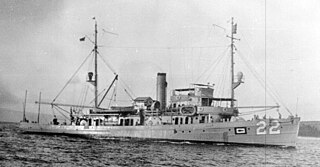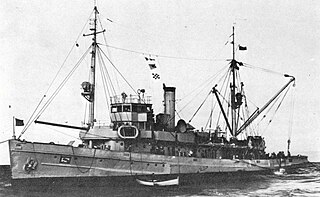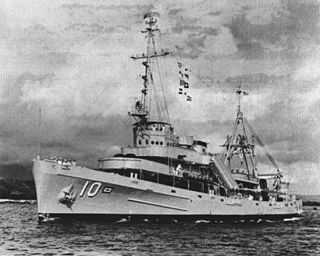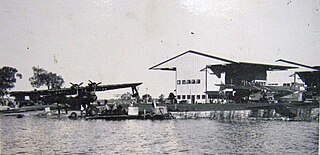
USS Narwhal (SS-167), the lead ship of her class of submarine and one of the "V-boats", was the second ship of the United States Navy to be named for the narwhal. She was named V-5 (SC-1) when her keel was laid down on 10 May 1927 by the Portsmouth Navy Yard in Kittery, Maine.

USS Stingray (SS-186), a Salmon-class submarine, was the second ship of the United States Navy to be named the stingray. Her keel was laid down in the Portsmouth Navy Yard on 1 October 1936. She was launched on 6 October 1937 sponsored by Mrs. Olive G. McLean, widow of Rear Admiral Ridley McLean, who had had a distinguished career in the submarine service, and was commissioned on 15 March 1938.

USS Haddo (SS-255), a Gato-class submarine, was the first ship of the United States Navy to be named for the haddo.

USS Caiman (SS-323), a Balao-class submarine, was a ship of the United States Navy that was later transferred to the Turkish Naval Forces in 1972 under the Security Assistance Program, where she was recommissioned as the third TCG Dumlupınar. She was retired in 1986.

USS Parrott (DD-218) was a Clemson-class destroyer in the United States Navy during World War II and was the second ship named for George Fountain Parrott.

USS Trinity (AO-13) was a Patoka-class replenishment oiler of the United States Navy.

USS Otus (AS-20) was a submarine tender in service with the United States Navy from 1941 to 1946. In 1945, she was converted to an internal combustion engine repair ship and redesignated ARG-20. Decommissioned in 1946, she was scrapped in 1970.

USS Widgeon (AM-22/ASR-1) was an Lapwing-class minesweeper acquired by the United States Navy for the dangerous task of removing mines from minefields laid in the water to prevent ships from passing. Later converted to a submarine rescue ship. Widgeon was named by the Navy after the widgeon, a freshwater duck.

The first USS Ortolan(AM-45/ASR-5) was a Lapwing-class minesweeper in the United States Navy. She was later converted to a submarine rescue ship. She was named after the ortolan, a European bunting.

HMAS Fremantle (J246/M246), named for the port city of Fremantle, Western Australia, was one of 60 Bathurst-class corvettes constructed during World War II, and one of 36 initially manned and commissioned solely by the Royal Australian Navy (RAN).

Lanikai, was a wooden hulled schooner-rigged diesel powered yacht in service with the United States Navy during both World War I and World War II, before being transferred to the Royal Australian Navy.

USS Osterhaus (DE-164) was a Cannon-class destroyer escort in service with the United States Navy from 1943 to 1946. She was scrapped in 1974.

The USS Coucal (ASR-8) was a Chanticleer-class submarine rescue ship in the United States Navy.

USS Florikan (ASR-9) was a Chanticleer-class submarine rescue ship in the United States Navy.

USS Greenlet (ASR-10) was a Chanticleer-class submarine rescue ship in service with the United States Navy from 1943 to 1970. In June 1970, the ship was transferred to the Turkish Navy, renamed TCG Akin (A-585) and remained in service until 2017.

USS Kittiwake (ASR-13) was a United States Navy Chanticleer-class submarine rescue vessel in commission from 1946 to 1994.

USS Sunbird (ASR-15) was a Chanticleer-class submarine rescue ship in the United States Navy.

USS Teaberry (AN-34/YN-29) was an Aloe-class net laying ship which was assigned to serve the U.S. Pacific Fleet during World War II with her protective anti-submarine nets and, at war's end, returned home safety with one battle star to her credit. She was later reactivated for duty during the Korean War era.

Naval Base Darwin was a United States Navy base built during World War II at Darwin, Northern Territory, Australia. The first US operations at Darwin was Naval mine depot, built to supply Australia with mines to support the Pacific War. As the US Navy expanded in the Island hopping campaign, Naval Base Darwin expanded to include a Port Darwin submarine base, PT boat Bases, and other facilities. US Navy operations started in 1942 and ended after the war in 1945.

Naval Base Perth was a United States Navy base at Perth, Western Australia. There were several Naval facilities at Perth during World War II. Perth on southwestern Australia was selected as the site for US Naval base as it is out of reach of Empire of Japan's long-range bombers. Bombing of Darwin on February 19, 1942, demonstrated a more southern port was needed. Both existing port facilities and new bases were built at Perth. Naval Base Perth's Fleet Post Office # was 255 SF Perth, Australia.




















